I’m often asked, “How do I start a butterfly garden?” and, “How can I get butterflies to come to my garden?” or, “I have lots of flowers but how come I never see any butterflies? Plant host plants! It takes more than nectar to entice butterflies to take up residence in your garden.
Larval host plants are the secret to successful butterfly gardening; they are plants required by a caterpillar for growth and development. By planting host plants in your garden, you offer a promise of food for the next generation and will attract more butterflies than you thought possible.
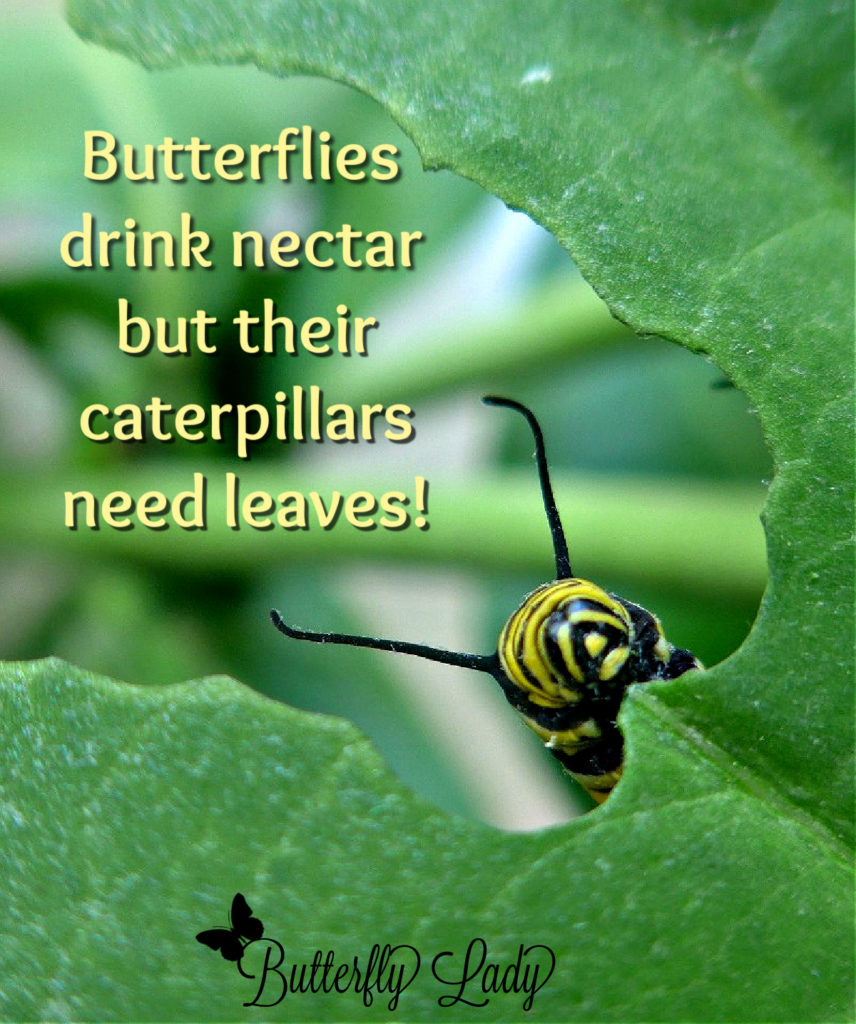
If you do not have host plants in your garden, butterflies may come to visit the flowers for nectar, but then they will leave. Butterflies are on a mission. Females are busy looking for places to lay their eggs. Males are also attracted to host plants, where they can find females for mating. So make it easy for them and plant those plants they need for their offspring.
Below are some common North American butterflies and their host plants. I have included some of the most common and easiest butterflies to attract. As you learn more about the different species of butterflies that are native to your area you can expand the different types of host plants to put in your garden.
Monarch (Danaus plexippus)
Queen (Danaus gilippus)

The eastern North American Monarch is known for its annual southward late-summer/autumn migration from the northern and central United States and southern Canada to Florida and Mexico. During the fall migration, monarchs cover thousands of miles, with a corresponding multigenerational return north. The western North American population of monarchs west of the Rocky Mountains often migrates to sites in southern California.
Queen butterflies can be found regularly in peninsular Florida and southern Georgia, as well as in the southern portions of Texas, New Mexico, Arizona, and California. Occasionally, the subspecies of the queen can be found somewhat north, in Kansas, Colorado, and Utah. Periodically, a stray may be found in the Midwest, such as in Missouri.
American Lady (Vanessa virginiensis)
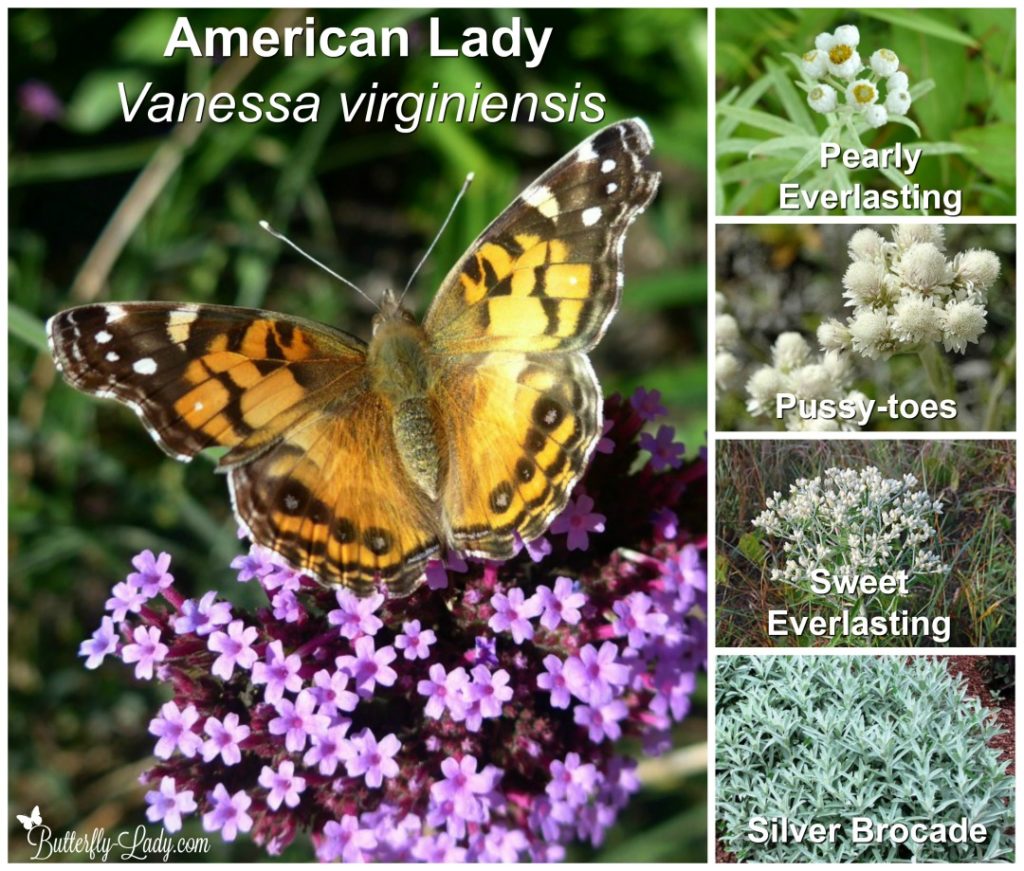
The American Lady butterfly occurs from southern Canada throughout the U.S. and southward to northern South America and is seen occasionally in Europe, Hawaii, and the larger Caribbean islands. Occasionally individuals can be found as far as southwest Europe. It has been introduced to Hawaii.
Black Swallowtail (Papilio polyxenes)
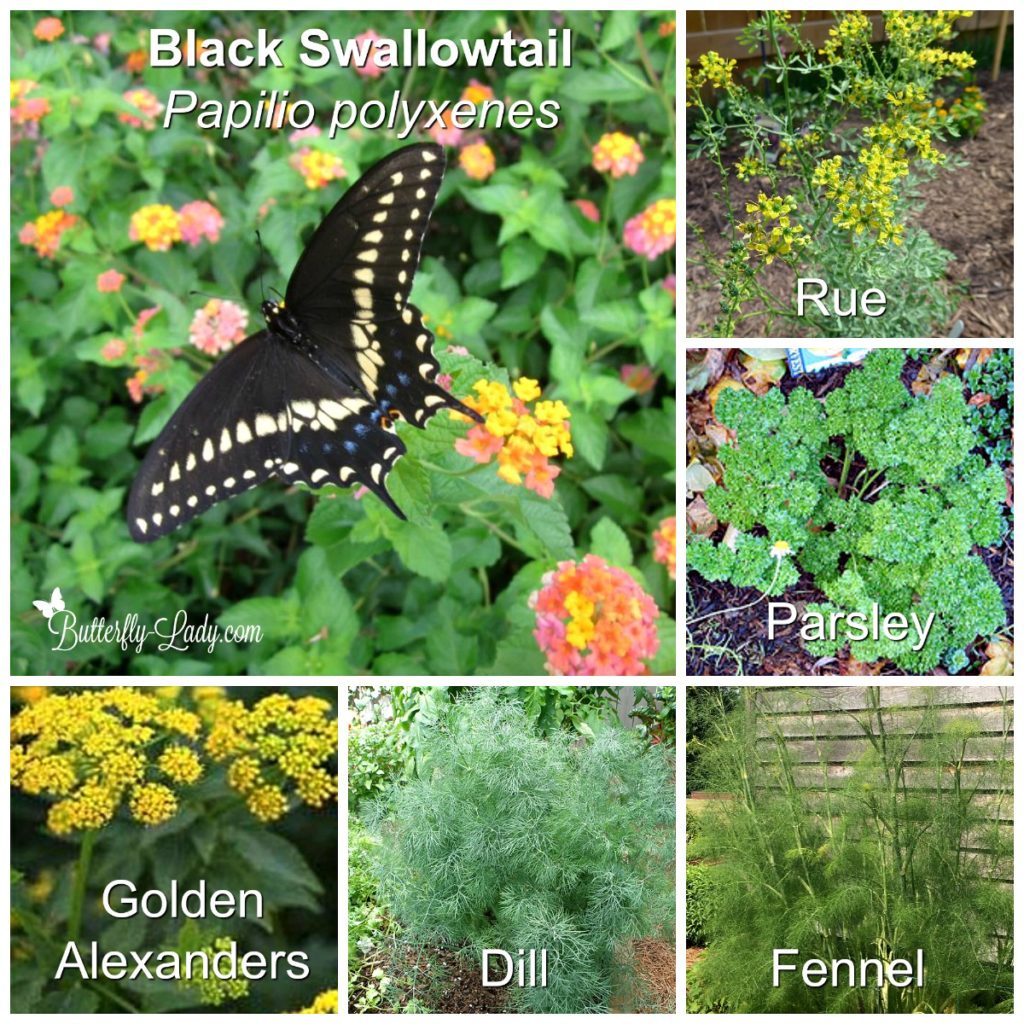
Black Swallowtails are some of the easiest butterflies to attract to your garden not only because they have so many host plants that are very easy to grow from seed. They are found from southern Canada through to South America. In North America they are more common east of the Rocky Mountains.
Painted Lady (Vanessa Cardui)

The Painted Lady butterfly is another common butterfly that can easily be attracted to your garden because it has so many different flowering plants that are host plants for their caterpillars. It is the most widespread of all butterfly species and is found on all continents except Australia and Antarctica. From the deserts of northern Mexico, the Painted Lady migrates and temporarily colonizes the United States and Canada south of the Arctic. (Click here to read more about the Painted Lady Migration: http://butterfly-lady.com/the-incredible-migrating-painted-lady/)
Common Buckeye (Junonia coenia)

The Common Buckeye is found in the United States east of the Rocky Mountains and in Mexico. Its habitat is open areas with low vegetation and some bare ground. The species Junonia grisea, the gray buckeye, is found west of the Rocky Mountains.
Cabbage White (Pieris rapae)
Checkered White (Pontia protodice)
Great Southern White (Ascia monuste)

Cabbage White butterflies are native to Eurasia. They have been introduced to southern Canada and most of the U.S. and are common in most open areas, like road sides and gardens. It is one of the first butterflies that appear in the spring. It is a pest to crucifer crops such as cabbage, kale, bok choy and broccoli.
Great Southern White butterflies are found from the Atlantic and Gulf coasts of the United States. It is migratory along the southeastern coast of the United States, with strays to Maryland, Kansas, and Colorado.
Checkered White butterflies are most commonly found in the southern parts on the United States along with some of the northern areas of Mexico. Occasionally the species can be found in the northern parts of the U.S. and southern Canada
Cloudless Sulphur (Phoebis sennae)
Gray Hairstreak (Strymon melinus)
Ceranus Blue (Hemiargus ceraunus)
Sleepy Orange (Eurema nicippe)

The Cloudless Sulphur is a large yellow butterfly found throughout most of the mainland United States. It is most common in the eastern United States and southern portions of the western United States, but it has been spotted as far north as Canada.
The Gray Hairstreak is one of the most common hairstreaks in North America, ranging over nearly the entire continent. It also occurs throughout Central America and in northern South America.
The Ceraunus Blue butterflies are small and easy to overlook. They are found in the Southwest, South Texas, Florida and the Keys south through the West Indies, Mexico, and Central America to South America. Strays sometimes to North Carolina, Missouri, Kansas, and Nevada.
Sleepy Orange butterflies are found year-round in southern and southwestern United States and in summer and fall can be found further north; they are a rare stray to Ontario, Connecticut, South Dakota, and Colorado.
Red Admiral (Battus philenor)
Question Mark (Polygonia interrogationis)
Eastern Comma (Polygonia comma)

Red Admirals are widely distributed across temperate regions of North Africa, the Americas, Europe, Asia, and the Caribbean. They reside in warmer areas, but migrate north in spring and sometimes again in autumn.
The Eastern Comma is found in the Eastern half of the United States east of the Rocky Mountains from southern Canada to central Texas and the Gulf Coast.
The Question Mark butterfly is found throughout most of the eastern U.S. and southern Canada, south to north central Florida and the northern Gulf states, and west to Arizona, eastern Wyoming and Colorado.
Southern Dogface (Zerene cesonia)
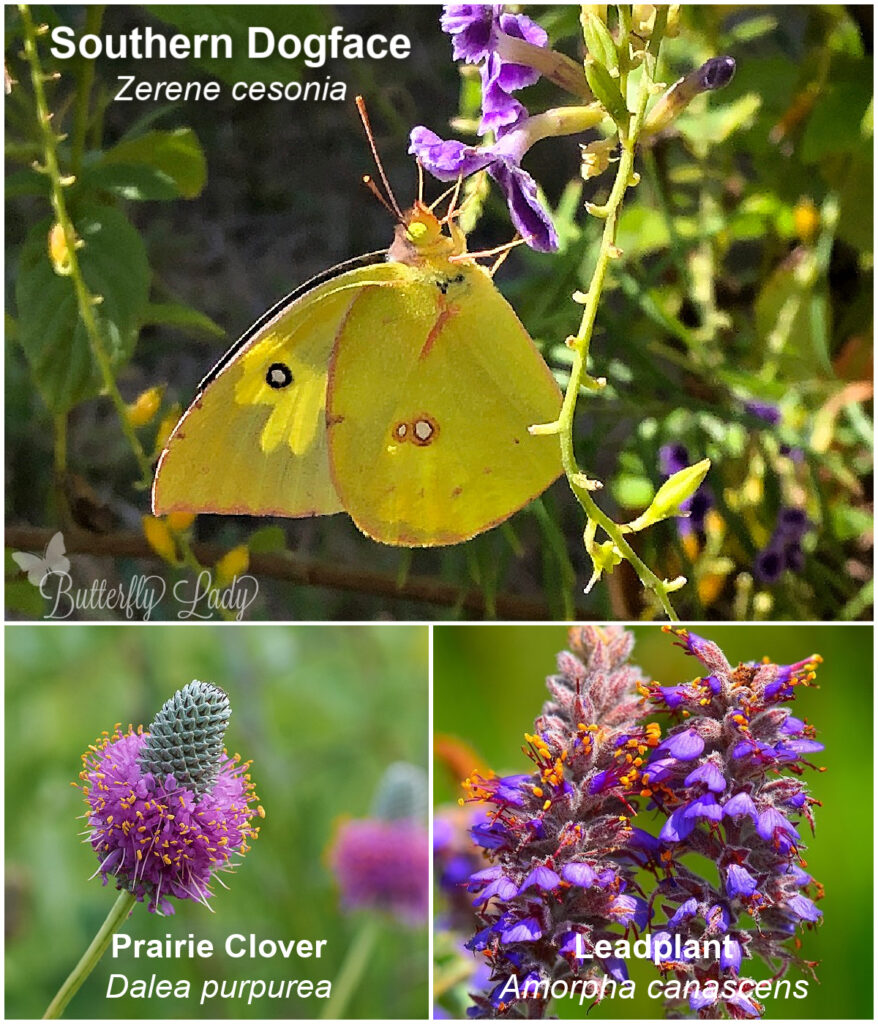
The Southern Dogface butterfly lives year-round in Texas and Florida. It is a stray or temporary resident from central California northeast through the Great Lakes area and all the eastern states.
Pipevine Swallowtail (Battus philenor)
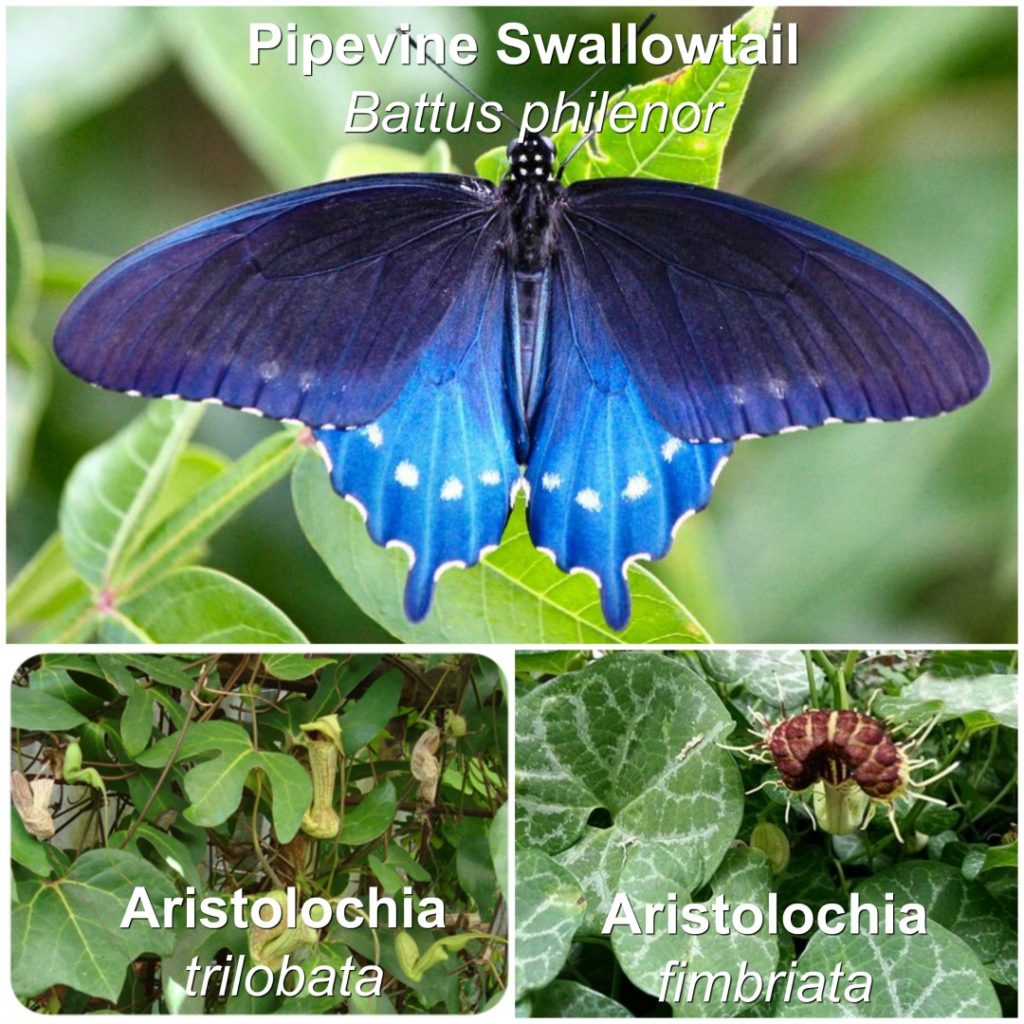
The Pipevine Swallowtail has a wide distribution across the Northern Americas. In the United States, the butterfly is found in New England down to Florida west to Nebraska, Texas, New Mexico, Arizona, California, and Oregon. There is also an isolated population in midland California.
Gulf Fritillary (Agraulis vanillae)
Zebra Longwing (Heliconius charithonia)
Variegated Fritillary (Euptoieta claudia)
Julia Heliconian (Dryas iulia )

Zebra Longwings appears all year in Florida and Texas and will travel to other northern states during warm months. (Click here to read more about these fascinating butterflies.)
Gulf Fritillaries are found primarily in the southern parts of the contiguous United States, from Florida to Texas and California. However, this butterfly’s range can extend from the Southern United States into parts of Mexico and Central America and sometimes as far as parts of South America. They are also found in Hawaii.
Variegated Fritillary can be found through Central America and Mexico to the southern United States; also Cuba and Jamaica. Regularly colonizes north through most of the United States except the Pacific Northwest.
The Julia Heliconian commonly called the Julia butterfly is native from Brazil to southern Texas and Florida, and in summer can sometimes be found as far north as eastern Nebraska.
Remember, you cannot have a butterfly without the caterpillar and you cannot have the caterpillar without that host plant. So plant lots of host plants. You can never have too many.
For a more comprehensive list of butterflies and their host plants, click here.

